As China’s most modernized city, Shanghai is called ‘The Pearl of the Orient’ as it attracts travelers from around the globe with its mix of traditional and contemporary beauty. The mesmerizing skyline, renowned attractions, and energetic lifestyle offered by the city make it a place worth visiting to explore diverse cultures. Do you love indulging in history while walking through the Old Town? Or maybe you are a food enthusiast searching for local cuisines? Perhaps you enjoy scenic views as a form of city tourism. Whatever type of traveler you are, Shanghai has it all. Unfortunately, in just a few short days, it is easy to miss some of the city’s most important places and events due to its entertainment-packed schedule. This guide aims to help you plan your trip so every visit remains memorable.
What Are the Top Attractions in Shanghai for First-Time Visitors?
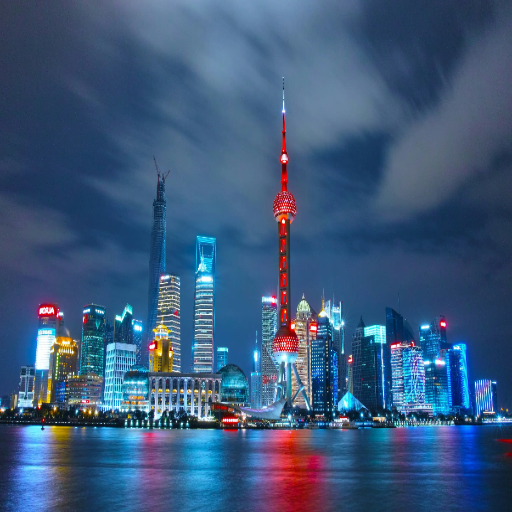
Exploring the Iconic Bund Promenade with Spectacular Pudong Views
The Bund Promenade is one of the most well-known places in Shanghai because it gives tourists an unmatched look at the city. The Bund is 1.5 kilometers long and features an astonishing view of the modern skyscrapers in Pudong on one end and Huawei’s bank of colonial buildings on the other. Those two sides of Shanghai are divided by the Huangpu River, which sits parallel to the Bund. This astonishing view showcases the blend of modern and old-world buildings. From the promenade, one can view the Oriental Pearl Tower, Shanghai Tower, and Jin Mao Tower, among other skyscrapers. I think The Bund is one of those places in China that first-time travelers should visit at night when the city’s skyline is illuminated.
The length of the Bund Promenade is about 1.5 kilometers (0.93 miles).
Notable Viewing Locations: The top buildings visible are the Oriental Pearl Tower (468 meters), Shanghai Tower (632 meters), and Jin Mao Tower (420.5 meters).
Best Time to Visit: Evening hours are available to view the illuminated skyline.
These characteristics ensure a complete understanding of Shaingahi’s historical and modern aesthetics.
Ascending Shanghai Tower: China’s Tallest Skyscraper with Breathtaking Observation Deck
Height and Design: Standing 632 meters (2,073 feet) tall, Shanghai Tower has a distinctive twisting form that minimizes wind resistance.
Observation Deck Details: Shanghai Tower has one of the highest observation decks globally, located on the 118th floor at 561 meters (1,840 feet).
Elevator Speed: The tower’s high-speed elevators travel at an astonishing 20.5 meters per second (67 feet per second), making the journeys comfortable and quick.
Viewing Experience: The observation deck enables you to capture the entire city of Shanghai at once, making it perfect for taking photos of the city.
Sustainability Features: The towers have advanced energy-saving infrastructure, such as double-layered glass outer skins and vertical wind generators, making eco-friendly operation possible.
Thanks to these technical specifications, the Shanghai Tower is undoubtedly a wonder of contemporary engineering and a tourist must-see.
Discovering the History and Treasures at Shanghai Museum
The Shanghai Museum is an internationally acknowledged institution that exemplifies China’s diverse cultural and historical wealth. It has over 120,000 artifacts, including ancient bronzes, ceramics, paintings, calligraphy, and jade. The museum features a unique round building representing Chinese philosophy, which denotes the union of heaven (round) and earth (square) as a harmonious whole.
Collection Highlights: The museum boasts some bronze artifacts from prehistory, exquisite porcelain of the Tang and Song dynasties, and meticulously preserved scroll paintings.
Technical Features: The museum employs advanced climate-control systems to maintain delicate antique treasures at a constant appropriate temperature and humidity. Its state-of-the-art lighting emphasizes the fine details of the exhibits while preventing damage from light.
Members of the public can experience an education of a lifetime within the boundaries of Shanghai Museum, which houses art and culture spanning thousands of years. The museum becomes a fantastic mixture of genius architectural pieces and curatorial exhibits, making it a sculptural and historic delight for travelers and tourists.
What Are the Best Shopping and Entertainment Spots in Shanghai?
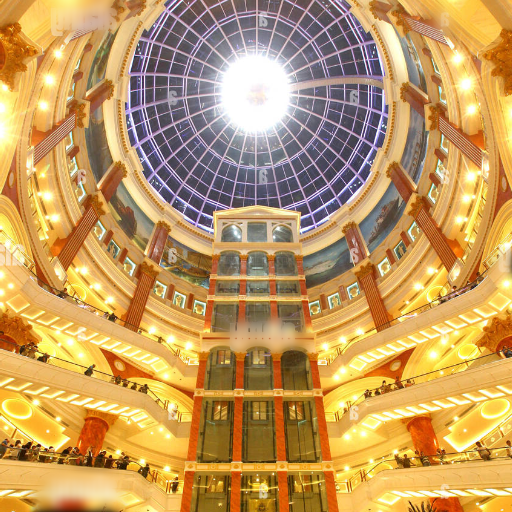
Strolling Along the Bustling Nanjing Road Shopping District
Nanjing Road, which stretches more than five kilometers long, is subdivided into two distinct parts: East and West Nanjing Road. Both sections feature diverse, sophisticated, traditional, and modern shopping options. Nanjing Road is one of the busiest commercial centers in Shanghai. East Nanjing Road is famous for its pedestrian-friendly environment with countless street performers and shops offering services from department stores like Wing On and Shanghai No. 1. In contrast, high-end luxury brands such as Gucci, Louis Vuitton, and Prada have their stores located on West Nanjing Road.
Nanjing Road is serviced by public transport, which is enormously appealing considering its infrastructure and accessibility. You can easily access the area using Shanghai Metro Lines 1, 2, and 10. The thoughtful infrastructure includes wide pedestrian paths and generous lounging space to enhance visitor satisfaction. Street lighting is designed to maintain a comfortable atmosphere, especially in the evenings when Nanjing Road turns into a vibrant display of neon signs and activity. These features make it a must-visit location for an all-encompassing shopping and entertainment experience in Shanghai.
Experiencing Shanghai Disneyland: Magic and Thrills for All Ages
Taiwanese visitors of all ages can appreciate Shanghai Disneyland’s unique blend of Chinese culture with Disney classics. Disney covers approximately 963 acres, making it one of the largest resorts in the world. It also contains six themed lands, including Adventure Isle, Tomorrowland, and Fantasyland.
Shanghai Disneyland contains key attractions, such as the Enchanted Storybook, which is the tallest castle in all of Disney. These attractions require intricate designs and creativity from the Imagineers. Disneyland also offers rides such as the TRON Lightcycle, which utilizes MAGLEV technology for acceleration, entertainment, and thrilling users.
Additionally, visitors can enjoy the wide variety of local and international cuisines offered, well-constructed to blend both. In Shanghai Disneyland, that mix of innovation and cultural excellence is present for everyone, as varying regions dictate the hours of operation from 8 AM to 9 PM.
Exploring Xintiandi’s Unique Shikumen Architecture and Trendy Boutiques
Xintiandi is unique in blending modern lifestyles with ancient Shikumen architecture. Brickwork facades, stone-framed doors, and enclosed courtyards showcase Western and Chinese integration, giving birth to Shikumen buildings in Shanghai during the 19th and early 20th centuries. These elements were westernized and modernized with time, which turned into the curtain wall technique, making these monuments ancient and historic.
This district seamlessly combines history with modernity by introducing trendy art galleries, cafes, and boutiques while preserving historical significance. Visitors can indulge in a sophisticated blend of international fashion and local craftsmanship, which serves as a creative outlet for local designers. Xintiandi does not disappoint lovers of history and modern businessmen. Additionally, Xintiandi boasts several sophisticated bars and restaurants that give a taste of this vibrant district’s rich culinary experience.
Where to Experience Shanghai’s Food Culture?
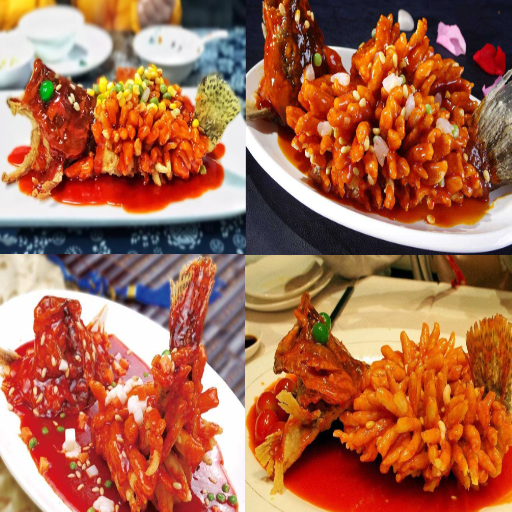
Sampling Authentic Shanghai Dumplings and Local Delicacies
To immerse oneself in Shanghai’s culinary heritage, one must try steaming xiaolongbao (soup dumplings). These dumplings are prepared with thin outer skins filled with meat and soup and served steamed in bamboo baskets. Authentic xiaolongbao must have a harmonious balance for the filling, which is typically made with pork or crab meat combined with soup. The soup is created by encapsulated stock in gelatin form, which melts in the cooking process.
Apart from xiaolongbao, traditional foods and snacks that define the cultural identity of the locals include shengjianbao (bread buns) and tangyuan (sweet dumplings). Authenticity is a mark of quality when it comes to Shanghai’s culinary art, and it can be experienced with the sheer use of quality ingredients and perfect cooking methods that ensure a mouthwatering dish combined with sweetness. All these foods can be found at street food restaurants or food stalls in markets, making it easier for all tourists to enjoy Shanghai’s rich and diverse culture.
Street Food Adventures in People’s Square and Beyond
The street food in People’s Square is purely Shanghai. As my culinary interests primarily lie in Shanghai cuisine, immersing myself in street food at People’s Square was a highlight. Commonly asked questions revolve around the most recommendable dishes and their respective locations.
Street Food at People’s Square
Shengjianbao (pan-fried Buns): A staple in Shanghai street food, these buns are mouth-watering, with crispy bottoms and juicy fillings.
Tangyuan (Sweet Glutinous Rice Balls): A symbol of joy and unity, these comforting treats are gently sweet and have sesame or peanut paste fillings.
Jianbing (Chinese Crepes): This dish is popular for breakfast because it features a savory blend of sauces, eggs, and crispy wafers.
Best Locations for Street Food
People’s Square Nearby Food Stalls: A great variety of savory options make it an excellent choice for a quick bite.
Wujiang Road: Famous for regional snacks, this food street is renowned for distinctive regional foods.
Yuyuan Garden Bazaar: The vibrant setting makes it appealing to tourists looking for traditional taste flavors.
These menus and restaurants balance authenticity and accessibility, ensuring that locals and tourists can appreciate street food. Further claims about ingredients and their specific cooking methods, which explain how street food represents a particular culture, can be verified.
Dining with a View Along the Huangpu River
Dining on the Huangpu River is a must, as it combines breathtaking views with exquisite cuisine. The Bund is renowned for its fine dining restaurants and rooftop bars, boasting stunning views of the river and downtown skyline. With M on the Bund and TOPS, you can have historical and contemporary elegance. For the more luxurious diners, golden hours (sunset or early evening) create the best atmosphere when seeking lighting and decor.
The most notable feature in Shanghai is the skyline. When picking a restaurant, check if its seats allow for unobstructed views. While it is common for restaurants to use outdoor seating and window-side neighborhood tables as premium options, it is best to make a reservation beforehand. Most restaurants in Shanghai have a wide range of menus, which, alongside the scenic view, provide a perfect blend of visual and tasteful splendor.
Which Modern Landmarks Should You Visit in Shanghai?
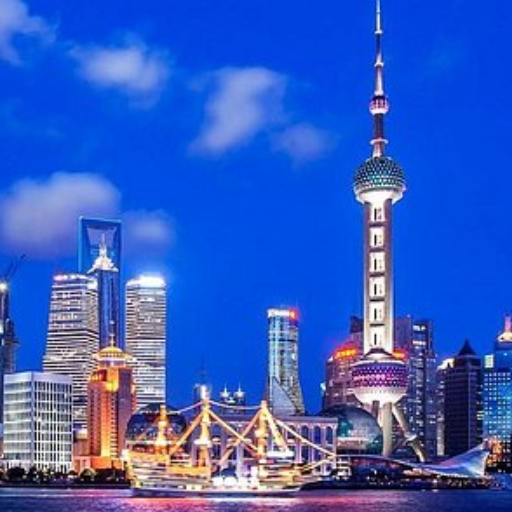
Ascending the Iconic Oriental Pearl Tower
My experience at the Oriental Pearl Tower is something I will always cherish. This architectural wonder, which stands at an impressive 468 meters high, provides breathtaking views of the Shanghai skyline from its observation deck at 259 meters. You can also find a rotating restaurant set at 267 meters, allowing a unique dining experience. For those looking to explore the history and culture of the city, I recommend visiting the lower sections where the Shanghai Municipal History Museum is located; it was particularly fascinating to me.
The technical details of the structure are something to marvel at as well. The tower’s design features eleven spheres, the largest of which is the “Space Module,” at a staggering 350 meters height, giving an alternate view. This unusual method of design guarantees structural strength and symbolizes the coexistence of modern and traditional Shanghai. It is effortless and quick due to the towers’ double-deck elevators that ascend at a rate of 7 meters per second. This, combined with the other features of the Oriental Pearl Tower, makes it an unparalleled landmark in modern times.
Exploring the Futuristic Pudong Skyline
Why not start with the fact that the Pudong skyline was the most futuristic architecture I had ever seen before my visit? The tower’s engineering features are awe-inspiring. Its double-deck elevators rise at a remarkable seven meters per second, enhancing the experience of visiting the tower. Moreover, the Space Module, at 350 meters, contributes to the world of design by providing incredible beauty and harmony alongside remarkable strength.
The height of the Space Module and the speed of the elevator are technical details that will get in the way of graphically explaining the beauty of the structures, but like many parts of the world, these parameters provide efficient technology. These speed parameters are more than sensible. They guarantee a great impression during sensible cuts of Pudong’s outlined skyscrapers.
Visiting the Shanghai Exhibition Center and Urban Planning Exhibition Hall
When I approached the Shanghai Exhibition Center and the Urban Planning Exhibition Hall, the first feature that drew my attention was that these places reflect the city’s culture and modern development. It was an astonishing compliment to urban planning as architecture. From the accurate scale models to the multimedia displays of how Shanghai developed over the years, everything encapsulated urban development. My fascination grew deeper with every element presented. It was an astonishing compliment to how the city worked and how modernization changed Shanghai.
I was particularly impressed with the technical details when I looked at the large-scale model of Shanghai. The level of detail was astonishing, with the scale model being known as one of the largest city displays in the world. The variety of lighting used alongside real-time data visualization technology allowed viewers to see the city and experience it as if they were looking down from a height above during rush hour. These technical elements solidified the display’s importance, depicting the complexity level within urban planning and the necessity of innovation as Shanghai continues to grow.
I also browsed the interactive parts of the city’s green initiatives and infrastructure improvements. The sections had stunning figures, including that more than thirty percent of Shanghai’s energy comes from renewable resources or millions of tons of carbon emissions are cut through green construction each year. This data clarified that meeting technical specifications to conserve resources was crucial. All in all, the visit illustrated Shanghai’s efforts to achieve the title of a global city while striving to embed sustainability in its aggressive growth strategy.
How to Explore Shanghai’s Historical Districts?
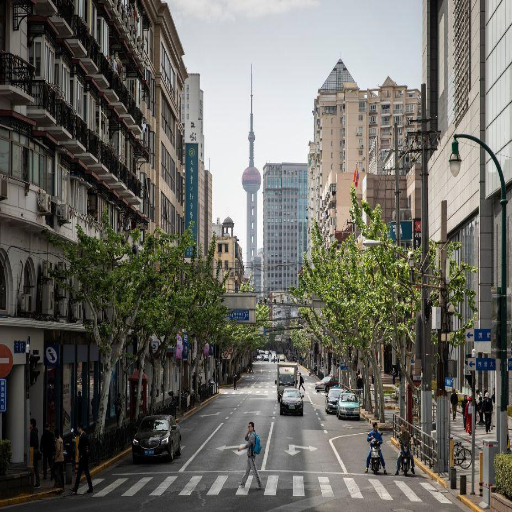
Wandering Through the Former French Concession’s Tree-Lined Streets
Meandering down the tree-filled avenues of the Former French Concession was a captivating experience that blended both Shanghai’s modern and historical aspects. The district’s European-style architecture and calm shaded streets contributed to a great sense of peace, starkly contrasting to the loud city. Preserved buildings in this region serve as vital examples of the combination of historical beauty with modern functional design, showcasing the city’s heritage-friendly, sustainable urban planning.
From a technical standpoint, preserving the original facade, limiting the heights of new constructions, and including natural areas as green spaces were significant. These conditions helped ensure the contour of the district was historic while still supporting modern urbanism. For example, zoning restrictions combined with adaptive reuse of buildings fundamentally decreased resource use and lessened the ecological load, corresponding with sustainability goals. This strategy is rational for the unique cultural character of Shanghai alongside the necessities of the city’s urban development.
Discovering the Artistic Hub of Tianzifang in the French Concession
Tianzifang is particularly important to me as an artistic center that combines the old and new Shanghai. To me, the fact that it has turned into a lively collection of galleries, boutique stores, and cafes suggests that there is an effort to ensure that an area’s historical authenticity is preserved even when there are demands from modern urbanization. The adaptive reuse of the traditional shikumen-style buildings facilitates these efforts by acting as a bounding box to preserve the original architectural form while modifying it to suit commercial and creative endeavors.
Other noteworthy technical parameters include a zoning by-law that severely restricts the amount of new construction done to the district. Furthermore, the district’s branding as a sustainable city is also marked by the local government’s focus on restoration work rather than new construction, which provides an eco-friendly approach to resource and pollution management. These measures serve to retain the identity of the French Concession while helping the area be more creative, environmentally friendly, and culturally rich for the tourists and the locals.
Exploring the Blend of East and West in Shanghai’s Architecture
In my opinion, the combination of Eastern and Western architecture in Shanghai is emblematic of the city’s rich history and cultural diffusion. One example of such a mix is Shikumen houses, which have traditional Chinese and European elements. The presence of Art Deco buildings alongside traditional Chinese structures in the Bund area serves as striking example of Art Deco fusion.
Some of the most important features are the materials used, the style and form of structures, and city planning. For example, brick and wood, which are commonly found in Shikumen buildings, portray local custom and workmanship, while Art Deco buildings made of concrete and steel signify progressive. Combining these diverse styles for practical and artistic purposes makes sense, which is what Shanghai strives for. This blend of styles reflects the city’s history while providing a unique skyline of striking contrast between ancient and modern cultures.
Frequently Asked Questions (FAQs)
Q: What do you recommend doing in Shanghai for a first-time visitor?
A: Travelers new to Shanghai should make it a point to stroll along the Bund to appreciate the skyline, visit Yuyuan Garden, which is a tranquil garden from the Ming Dynasty era, check out the former French Concession with its cafes and tree-lined streets, explore the impressive scale model of Shanghai at the Shanghai Urban Planning Exhibition Center, and take a day trip to Zhujiajiao, the water town. Additionally, the Jade Buddha Temple is culturally important and should be visited by all, and Xintiandi is a famous shopping district that merges modern entertainment with old Shanghai architecture.
Q: Is it better to go sightseeing in Shanghai during the day or at night?
A: Sightseeing in Shanghai is unique for both day and night. Yuyuan Garden, the Jade Buddha Temple, and the water villages of Zhujiajiao or Zhouzhuang are perfect to visit in the afternoons as you can enjoy the detailing of the architecture and the arts and crafts. However, the night shifts Shangai’s scenery like never before, especially along the bund and Lujiazui area. The illuminated skyline makes the views exceptional at night. It’s like this: set your plans for both days and nights to witness the best that Shanghai has to offer.
Q: What must-see attractions in Shanghai are for those interested in Chinese history?
A: If you’re a history buff visiting Shanghai, you should focus on the Old Town area near the Yuyuan Garden, which features architecture and structures from the Ming Dynasty. For those fascinated with history, the Shanghai Urban Planning Exhibition Center has a scale look at Shanghai with the city’s rapid growth and its host. The French Concession is another part of town that still keeps the dominion style of Eastern and Western civilization influence blended. Authentic cultural experiences can be found in the water village of Zhujiajiao, with its old canals and bridges, or the Shanghai Museum, home to one of the finest collections of ancient Chinese artifacts, including bronze, ceramics, calligraphy, and paintings.
Q: What is a reasonable amount of time needed to visit all the attractions in Shanghai?
A: To fully appreciate all the attractions of Shanghai, 3-4 days is ideal. This will allow sufficient time to cover some more popular tourist sites like the Bund, Yuyuan Garden, Xintiandi, Former French Concession, and Zhujiajiao Water Village. An additional 1-2 days (5-6 days total) would allow for more in-depth exploration of the city, including some of the metro cities, and possibly allow a ride on the Maglev train to see the high-speed transportation technology of China. It is estimated that several new attractions will have opened by 2025, meaning that the time needed for a more thorough visit may be increased.
Q: What suggestions do you have for enjoying the Bund in Shanghai?
A: Visitors to the Bund, one of Shanghai’s most popular areas, can enjoy numerous attractions, such as going on a leisurely walk along the waterfront to see the stark contrast between the historic European-style buildings and the modern architectural skyline of Pudong across the river; dine at some of the world-class restaurants located in the old heritage places; enjoy a river cruise on Huangpu River for some breathtaking views; visit the Bund Historical Museum to gain insight to some parts of the colonial past; and capture the night views when the entire Lujiazui financial district is lit up. Mornings provide a chance to watch elderly locals practicing tai chi, while during the evenings, visitors can experience Shanghai at its most glamorous.
Q: Should I go to Zhujiajiao water village from Shanghai?
A: Absolutely, Zhujiajiao water village is a must see when you’re in Shanghai. It’s about a 1-hour drive from the city center, making this 1,700-year-old town a tranquil escape from the fast-paced Shanghai. Often referred to as the ‘Venice of Shanghai,’ Zhujiajiao boasts old stone bridges over beautiful canals, traditional Ming and Qing dynasty buildings, and lovely narrow streets. Tourists can enjoy the boat rides along the canals, eat local food, visit gardens and temples, and buy traditional crafts. It has become very touristic over the years; however, going on weekdays and arriving early helps beat the crowd. Many people think it is more genuine and less touristy than other water villages like Zhouzhuang.
Q: What will I find in Shanghai’s Former French Concession?
A: The Former French Concession is one of the most picturesque parts of Shanghai, with a European touch and tree-lined streets, parks, and buildings. Tourists can stroll Wukang Road and Fuxing Road, see the different styles of colonial buildings, lane houses, and shikumen houses, and see Fuxing Park, where locals do tai chi and dance in the morning. It also has trendy shops, art galleries, and some of Shanghai’s finest cafes and restaurants. Noteworthy places are the former residence of Sun Yat-sen, the arts district of Tianzifang with its mazy alleyways, and Xintiandi, which is an upmarket pedestrian area where old shikumen houses have been refurbished and turned into stylish boutiques and restaurants.
Q: Why should Yuyuan Garden be a priority visit for travelers in Shanghai?
A: Yuyuan Garden (or Yu Garden) should be a priority visit for travelers in Shanghai because it is a magnificent example of a traditional Chinese garden from the Ming Dynasty. Built-in 1559, this 5-acre garden consists of serene ponds with beautiful pavilions, rockeries, and bridges created with feng shui design principles in mind. Just next to the garden is the Yuyuan Bazaar, which has souvenir shops with traditional buildings offering handmade arts and crafts. The Mid-Lake Pavilion Teahouse is one of the oldest in Shanghai and is an excellent place for tourists to enjoy traditional Chinese tea. The garden is lovely during Chinese New Year as the lantern displays make it one of the main attractions in Shanghai.
Q: What shopping areas in Shanghai are of particular interest?
A: There is no shortage of shopping centers in Shanghai, and each district is unique in its own right. Nanjing Road encompasses the most jam-packed shopping street with local shops, shops from foreign countries, and even large department stores. Xintiandi has designer boutiques and lifestyle stores in a renovated historic district, so this area caters to a more upscale clientele. Luxury retailers are typically found in Pudong’s Lujiazui glitzy malls and the more luxurious-looking stores on Huaihai Road. While Yuyuan Bazaar sells many authentic souvenirs and traditional items, it is best known for its jade, tea, silk, and handcrafted souvenirs, making it ideal for tourists. Nearby Yu Garden, Tianzifang, located in the former French Concession area, is known for independent artist gift shops and art craft stores. As for electronics, better deals can be found at Metro City and Pacific Digital Plaza located in Xujiahui.